
The ten best vacuum cleaners
Chosen by Charlie Minter Click on the image to the right to launch our guide
2023-09-21 21:28
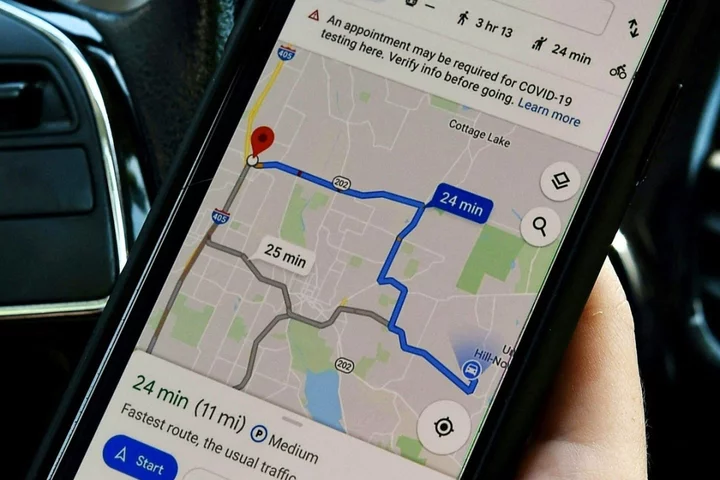
Man drives off bridge ‘following Google Maps’
A man who died after driving his car off a collapsed bridge was following Google Maps directions, according to a lawsuit. The family of Philip Paxson, who drowned on 30 September last year while driving home from his daughter’s ninth birthday party, is suing the technology giant for negligence, claiming that it had been informed of the collapse but failed to update its navigation system. Paxson, a medical device salesman and father of two, drove his Jeep Gladiator off the derelict bridge into Snow Creek in Hickory, North Carolina. He was driving through an unfamiliar neighbourhood when Google Maps directed him to cross a bridge that had collapsed nine years prior and was never repaired, a lawsuit filed Tuesday in Wake County Superior Court alleges. “Our girls ask how and why their daddy died, and I’m at a loss for words they can understand because, as an adult, I still can’t understand how those responsible for the GPS directions and the bridge could have acted with so little regard for human life," said his wife, Alicia Paxson. State troopers who found Paxson's body in his overturned and partially submerged truck had said there were no barriers or warning signs along the washed-out roadway. He had driven off an unguarded edge and crashed about six metres (20 feet) below, according to the lawsuit. The North Carolina State Patrol had said the bridge was not maintained by local or state officials, and the original developer’s company had dissolved. The lawsuit names several private property management companies that it claims are responsible for the bridge and the adjoining land. Multiple people had notified Google Maps about the collapse in the years leading up to Paxson's death and had urged the company to update its route information, according to the lawsuit. The Tuesday court filing includes email records from another Hickory resident who had used the map's “suggest and edit” feature in September 2020 to alert the company that it was directing drivers over the collapsed bridge. A November 2020 email confirmation from Google confirms the company received her report and was reviewing the suggested change, but the lawsuit claims Google took no further actions. A spokesperson for Google, which is headquartered in California but maintains a registered office in Raleigh, said: “We have the deepest sympathies for the Paxson family. Our goal is to provide accurate routing information in Maps and we are reviewing this lawsuit.” In a post on Facebook, Paxson’s mother-in-law wrote that it was dark and rainy on the night that he died. “He will be greatly missed by his family and friends,” she wrote. “It was a totally preventable accident. We are grieving his death.” Additional reporting from agencies Read More Google Maps prank sees school renamed 'Hell on Earth' Google’s powerful ‘Bard’ AI can now get into your email BBC reviews Russell Brand’s time at corporation as YouTube demonetises content Google announces huge breakthrough step in finding genes that cause disease
2023-09-21 21:25
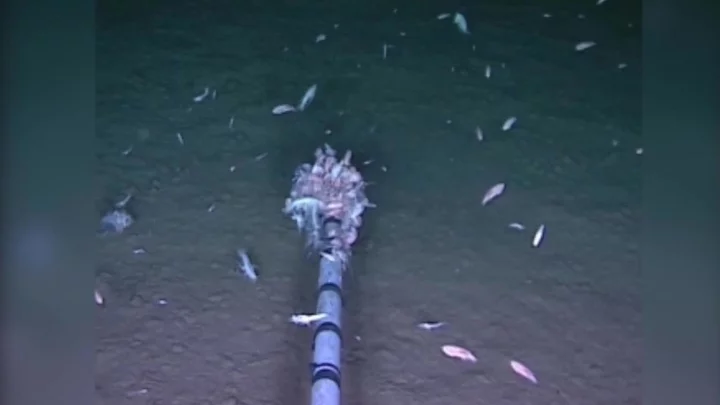
Scientists have found a novel virus at the bottom of the ocean
Scientists have discovered a new virus in the Pacific that is thought to be the deepest ever found in Earth’s oceans. The so-called bacteriophage virus infects and replicates inside bacteria, and was found in the Mariana Trench, which is the Pacific’s deepest point. Bacteriophages are among the world’s most abundant life forms, and are important for regulating population sizes in the oceans and releasing nutrients. This one, the catchily named vB_HmeY_H4907, was picked up at 8,900 metres below sea level. That is still some way off the 11,000 metre floor of the trench. Min Wang, a marine virologist from the Ocean University of China, said: “To our best knowledge, this is the deepest known isolated phage in the global ocean.” “Wherever there’s life, you can bet there are regulators at work. Viruses, in this case.” Scientists think this virus is likely to be distributed widely in the world’s oceans, despite the fact it has only been discovered. It has a similar structure to its host bacteria group halomonas. These are usually found in sediments and geyser-like openings on the seafloor. They also think the virus is lysogenic, which means it infects the host but does not kill it. Dr Wang said the discovery could inform further research about how viruses survive in the world’s harshest environments. “Extreme environments offer optimal prospects for unearthing novel viruses,” he added. The virus was found in the so-called hadal zone, which the study’s authors said is “the planet’s least explored and most mysterious environment, and it is the deepest habitat for life on Earth’s surface”. The area is named after Hades, the Greek god of the underworld. Researchers wrote in the study: “These findings expand our understanding of the phylogenetic diversity and genomic features of hadal lysogenic phages, provide essential information for further studies of phage-host interactions and evolution, and may reveal new insights into the lysogenic lifestyles of viruses inhabiting the hadal ocean.” The findings were published in the journal Microbiology Spectrum. Sign up to our free Indy100 weekly newsletter Have your say in our news democracy. Click the upvote icon at the top of the page to help raise this article through the indy100 rankings.
2023-09-21 20:48

Cisco beefs up cybersecurity play with $28 billion Splunk deal
(Reuters) -Cisco Systems has agreed buy cybersecurity firm Splunk for about $28 billion in its biggest-ever deal to beef up
2023-09-21 20:29
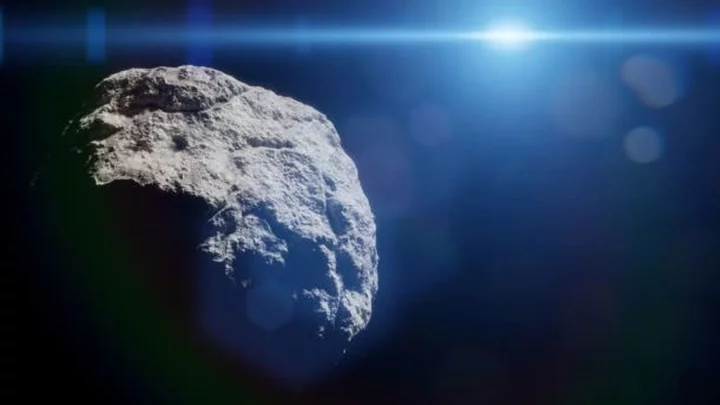
Scientists issue warning about asteroid heading to Earth with force of 24 atomic bombs
Scientists are on alert after NASA confirmed there is a chance an asteroid the size of the Empire State Building could come smashing into Earth. The asteroid is named Bennu after the ancient Egyptian bird god and has been on the space agency’s radar for a long time as they try to prevent it from coming crashing into our planet. Bennu has been categorised as one of the two “most hazardous known asteroids” and, despite the chance of impact standing at 1-in-2,700, it could strike the Earth with the force of 24 times that of the largest nuclear bomb – 1,200 megatons of energy. The carbon-based asteroid is approximately 510 metres wide and experts predict that it will come closest to hitting Earth on September 24, 2182. While the asteroid is quite sizeable, it is not quite as sizeable as the six-mile-wide asteroid which almost completely wiped out the dinosaurs. But, NASA warns that Bennu “could cause continental devastation if it became an Earth impactor”. A space mission launched using NASA’s OSIRIS-REx spacecraft has successfully taken a sample from Bennu in order for scientists to better understand the potentially dangerous asteroid. On Sunday (24 September) a capsule of the material will be dropped by OSIRIS-REx and returned to Earth where it will be retrieved and the matter inside studied. Davide Farnocchia of NASA's Jet Propulsion Laboratory told the Science Journal: “We improved our knowledge of Bennu's trajectory by a factor of 20.” As scientists work to investigate how much of a risk it could cause, Farnocchia added: “In 2135, we'll know for sure.” Sign up to our free Indy100 weekly newsletter Have your say in our news democracy. Click the upvote icon at the top of the page to help raise this article through the indy100 rankings.
2023-09-21 20:28
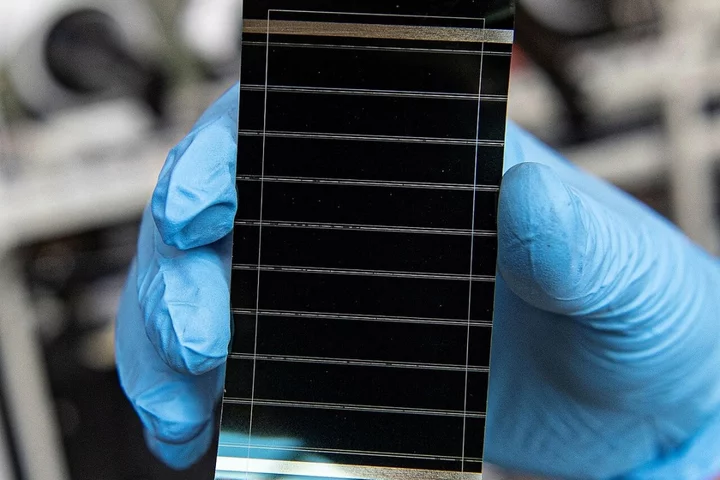
Solar panel breakthrough could supercharge ‘miracle material’ production
Scientists have made a major breakthrough with a new type of solar panel that they claim could supercharge the transition to renewable energy sources. A team from the University of Surrey discovered that a nanoscale “ink” coating could improve stability enough to make next-generation perovskite solar cells suitable for mass production. Perovskite is cheaper and lighter than conventional silicon-based cells, as well as far more efficient, however the emerging technology currently suffers from a drop in efficiency and energy output during the manufacturing process. “Performance limits of traditional solar cells are why researchers are switching to examining perovskite as the next-generation solar technology, especially as applications both terrestrial and in space are rapidly growing,” said Dr Imalka Jayawardena from the University of Surrey’s Advanced Technology Institute (ATI). “Our key development in solar panel technology shows a cost-effective approach to scaling of perovskite solar cells, a development which could help countries around the world to reach their net zero targets faster.” The breakthrough was made when the researchers identified an aluminium oxide that minimises the drop in efficiency during the conditioning of perovskite solar cells. Perovskite has been hailed as a “miracle material” for its potential to transform an array of industries, from ultra high-speed communications to renewable energy. Recent advances have seen it used to create self-healing solar panels that can recover 100 per cent of their efficiency after being damaged by radiation in space, as well as break new efficiency records when combined with silicon to form tandem cells. If the cheap-to-produce perovskite cells can be manufactured at scale while retaining their durability and reliability, then the cost of solar panels would plummet. “Solar and wind energy costs are rapidly decreasing based on technology improvements, to the level where worldwide over 80 per cent of all new additional power generation capacity is based on renewables,” said Ravi Silva, from the ATI, University of Surrey. “The levelized cost of solar electricity is now cheaper than most other power-generating sources. With the maturing of perovskite solar modules, the levelized cost of electricity will significantly decrease further, and that is why this is such an exciting area to work.” The research was detailed in a study, titled ‘Modification of Hydrophobic Self-Assembled Monolayers with Nanoparticles for Improved Wettability and Enhanced Carrier Lifetimes Over Large Areas in Perovskite Solar Cells’, published in the peer-reviewed scientific journal Solar PRL. Read More Hundreds of years after it was discovered, one material is about to change the world ‘Miracle material’ smashes solar panel efficiency threshold Scientists invent solar panels that work in a snow blizzard September Supermoon: When is it and how to view it? Amazon Alexa is getting the same brain as ChatGPT
2023-09-21 19:27

VinFast discloses revenue surge in first report since blockbuster debut
(Reuters) -Vietnamese electric-vehicle maker VinFast on Thursday reported a 131.2% rise in revenue in its first quarterly report since going
2023-09-21 18:58
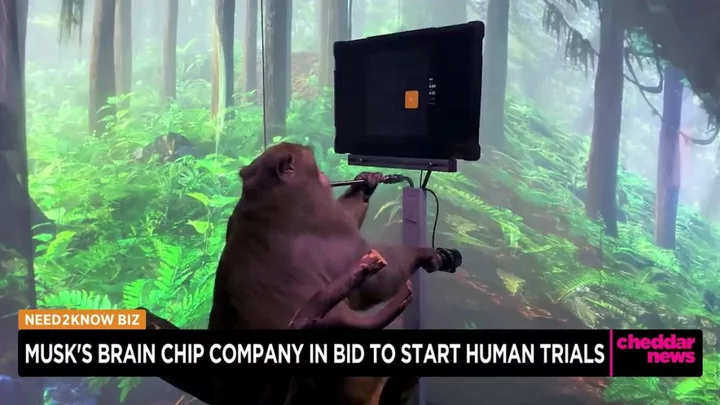
Former Elon Musk employee speaks out on 'ridiclous' death of Neuralink's monkeys
A new report from Wired has alleged that Elon Musk's Neuralink - a neurotechnology company developing a brain-computer interface - euthanised the company's macaque subjects after they suffered various complications from the implant. The report comes after human-test subjects were recently approved for Neuralink's clinical trial. Elon Musk had claimed earlier this month that "no monkey has died as a result of a Neuralink implant, but public documents obtained by the Physicians Committee for Responsible Medicine (PCRM) and seen by Wired, suggest that the primate subjects suffered complications including "bloody diarrhoea, partial paralysis, and cerebral edema." Musk had acknowledged the deaths on September 10 on Twitter/X, denying the deaths were "a result of a Neuralink implant", and that researchers had selected subjects who were already "close to death." However an anonymous former employee called this "ridiculous" if not a "straight fabrication." However, the public records reviewed by Wired suggest a different story. The PCRM, a nonprofit aiming to abolish live animal testing, claim that Musk knew his comments about the primate subjects deaths "to be false". They write that investors deserve to hear the truth about the safety, "and thus the marketability," of Neuralink's product. A December 2019 experiment outlined in one of the documents mentioned a subject known as Animal 15. The documents said that the subject "began to press her head against the floor for no apparent reason" just days after receiving the implant. Her condition only worsened as she "began to lose coordination" and "would shake uncontrollably when she saw lab workers." Staff finally euthanised her months later. Last year, the PCRM filed a complaint with the US Department of Agriculture (USDA) alleging that Neuralink's practices violate the Animal Welfare Act. The US Department of Transportation is also investigating Neuralink over allegations contimanted devices that were removed from monkeys' brains were illegally transported. Indy100 have reached out to Neuralink for comment. Sign up to our free Indy100 weekly newsletter Have your say in our news democracy. Click the upvote icon at the top of the page to help raise this article through the indy100 rankings.
2023-09-21 17:59
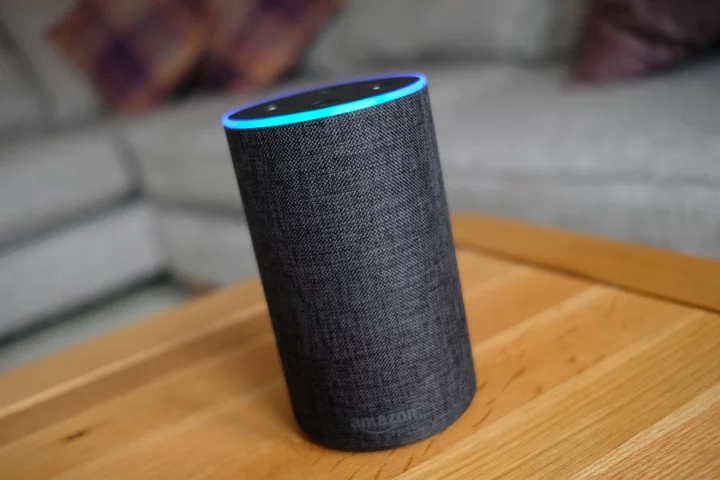
Amazon Alexa gets new AI powers, with the same kind of brain as ChatGPT
Amazon is adding the same kind of brain that powers ChatGPT into Alexa. The new technology is intended to allow the virtual assistant to be more powerful and able to speak with its owners in more natural conversations. The announcement were part of a wide array of new devices launched by Amazon this week. It also revealed new tablets and Echos, including those with screens, as well as plans to use generative artificial intelligence to create art to show on those screens. Every year, Amazon announces a number of Alexa devices, which have in the past included everything from soundbars to microwaves. This year, much of its focus was on artificial intelligence. While Alexa was one of the first virtual assistants of its kind to go mainstream, Amazon has lagged behind rivals such as Microsoft and Google in integrating new large language models into those systems. The sudden rise of such technology has sparked greater scrutiny of AI from regulators, given its explosion into general use and concerns over its potential impact on human life as well as industry, jobs and education. During a live event to unveil its latest range of Alexa-powered devices, Amazon looked to reaffirm its position as a market leader in AI by showing off an update to the assistant that will allow for more natural conversations with Alexa, rather than just the transactional request fulfilment it currently runs on. In a live demonstration of Alexa’s new large language model (LLM), Amazon devices boss Dave Limp showed how the new version of the assistant will be able to be more expressive in its responses - for example sounding happier when returning a positive sporting result for a user’s favoured team. Based within a new section of the service called “Let’s Chat”, Alexa will respond without the use of a wake word first, be able to pick up a conversation after a break and still understand the context, as well as understand inferences and more vague prompts in a way that Limp said is “like talking to a friend”. For example, the new Alexa will respond to the prompt “I’m cold” by turning on the heating in a connected home. Amazon has not confirmed a general release date for the new version of Alexa, instead focusing on an early preview programme in the US to try out the new capabilities among some users. Technology expert Ben Wood, chief analyst at CCS Insight, said it was “little surprise” to see Amazon discussing the power of its AI assistant in this way. “It undoubtedly knows that it needs to keep pace with rivals such as Google and Microsoft so articulating what it is doing in this area was essential for this event,” he said. “The upgraded way to talk to Alexa certainly makes it a more personal experience but success will depend on Amazon being able to get consumers to engage with the Echo devices in a very different way to the transactional and basic requests used today. “Some users may find it a little intimidating, but if successful it could make interactions a lot more conversational.” Elsewhere at its hardware event, Amazon unveiled a string of new hardware products, including several new Alexa-powered Echo smart speakers and smart home hubs, as well as new Fire tablets and updated Fire TV Stick devices. Read More Neuralink’s monkeys may have died due to brain implants contrary to Musk’s claims Facebook changes logo to ‘make F stand apart’ – but can you tell the difference? What is ‘Rumble’, where Russell Brand is posting videos? Neuralink’s monkeys may have died due to brain implants contrary to Musk’s claims Facebook changes logo to ‘make F stand apart’ – but can you tell the difference? What is ‘Rumble’, where Russell Brand is posting videos?
2023-09-21 17:58
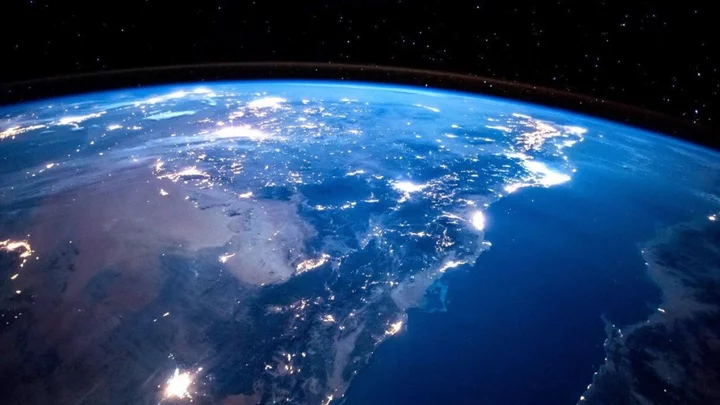
A scientist has discovered when Earth's first continent was formed
A researcher has figured out that the Earth’s first continent was formed 3bn years ago, in a new paper that sheds fresh light on the early stages of the planet’s life. Jane Greaves, an astronomy professor in the School of Physics and Astronomy at Cardiff University in Wales, was examining continent formation on distant stars and planets. It is thought that exoplanets with continents that formed in a similar way to Earth’s are more likely to be habitable, and perhaps even contain alien life. In the process, she calculated when several distant planets’ continents were born, as well as those a little closer to home. Continents on Earth sit on top of the planet’s hot, viscous mantle. Heat from the inner core stops the mantle from solidifying. The reason the core is hot is because it contains radioactive elements that came from neutron star collisions billions of years ago such as forms of Uranium, Thorium and Potassium. By analysing how many materials like this are present on Earth and on other planets, we are also able to estimate when the continents formed. On Earth, that was about 9.5 billion years since the beginning of the universe. Meanwhile, in Greaves' sample, the first continents appeared 2bn years before Earth’s on the exoplanets of younger, so-called thin disk stars. Older, thick disk stars analysed in her work produced rocky planets with continents that appeared even earlier: about 4 to 5bn years before Earth’s. “The outlook seems very promising for finding rocky exoplanets with continents, given that nearby Sun-like stars have already produced a few candidate hosts,” she wrote. The study, “When were the First Exocontinents?” is published in Research Notes of the American Astronomical SocietySign up to our free Indy100 weekly newsletter Have your say in our news democracy. Click the upvote icon at the top of the page to help raise this article through the indy100 rankings.
2023-09-21 17:19

Chinese EV maker Nio launches first mobile phone
SHANGHAI (Reuters) -China's Nio Inc on Thursday unveiled a high-end smartphone designed to be used with its electric vehicles, touting
2023-09-21 15:56
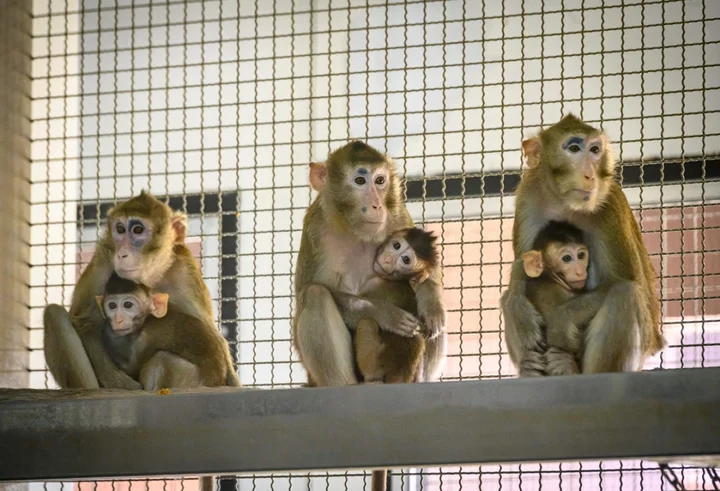
Neuralink’s test monkeys died due to brain implants contrary to Elon Musk’s claims, report suggests
Test monkeys at Elon Musk’s controversial biotech startup Neuralink died due to a number of complications from brain chip implant procedures, counter to the claims made by the multi-billionaire, a new report claimed. Nuralink has been developing chips to be implanted into the skull, claiming that such a computer-brain interface will help restore vision in the blind and paralysed people walk again. The company unveiled the working of its technology in monkey models in the past, including one demonstration of a nine-year-old macaque learning to play the 1970s classic video game Pong. However, the startup is also subjected to complaints by animal rights groups, including the Physicians Committee for Responsible Medicine (PCRM), which criticised the company’s “inadequate care” of its research monkeys a number of times in the past. In a post on X, the Tesla titan said earlier this month that “no monkey has died as a result of a Neuralink implant” in response to allegations that the neurotech firm was inflicting “extreme suffering” on its primate test subjects. “First our early implants, to minimise risk to healthy monkeys, we chose terminal monkeys (close to death already),” Mr Musk posted on X, the platform previously known as Twitter. In a presentation last year, the multibillionaire also claimed that Neuralink’s animal testing was never “exploratory” but was conducted to confirm scientific hypotheses. “We are extremely careful,” he said at the presentation. However, public documents obtained by PCRM – a nonprofit that advocates against using live animals in testing – present a different picture. The documents, reviewed by Wired, pointed out that a number of monkeys, on whom the implants were tested, were euthanised after suffering various complications, including “bloody diarrhea, partial paralysis, and cerebral edema”. One document reportedly noted that a male macaque was euthanised in March 2020 “after his cranial implant became loose” to the extent that they “could easily be lifted out”. A necropsy report of this monkey pointed out that “the failure of this implant can be considered purely mechanical and not exacerbated by infection”, which appeared to counter Mr Musk’s claim that no monkeys died due to Neuralink’s chips. Another primate, the report noted “began to press her head against the floor for no apparent reason” and lose coordination, with her condition deteriorating for months until she was finally euthanised. A necropsy report, cited by Wired, suggested that this animal was bleeding in her brain and that the neurotech firm’s implants left parts of her cerebral cortex brain region “focally tattered”. However, the company held that its “use of every animal was extensively planned and considered to balance scientific discovery with the ethical use of animals”. Neuralink did not immediately respond to The Independent’s request for comment. The latest report also comes as Neuralink announced on Wednesday that it has started human trials for people with quadriplegia after testing its implants on pigs and monkeys. “We’re excited to announce that recruitment is open for our first-in-human clinical trial,” the company posted on X. “If you have quadriplegia due to cervical spinal cord injury or amyotrophic lateral sclerosis (ALS), you may qualify,” it said. Read More Elon Musk recruiting humans to trial brain implant Starship rocket launch window revealed by FAA Elon Musk reveals trillion dollar algorithm that explains everything he does Elon Musk’s Neuralink recruiting humans to trial brain implant Elon Musk and the one trillion-dollar algorithm that explains everything he does Elon Musk says monkeys implanted with Neuralink brain chips were ‘close to death’
2023-09-21 15:23
